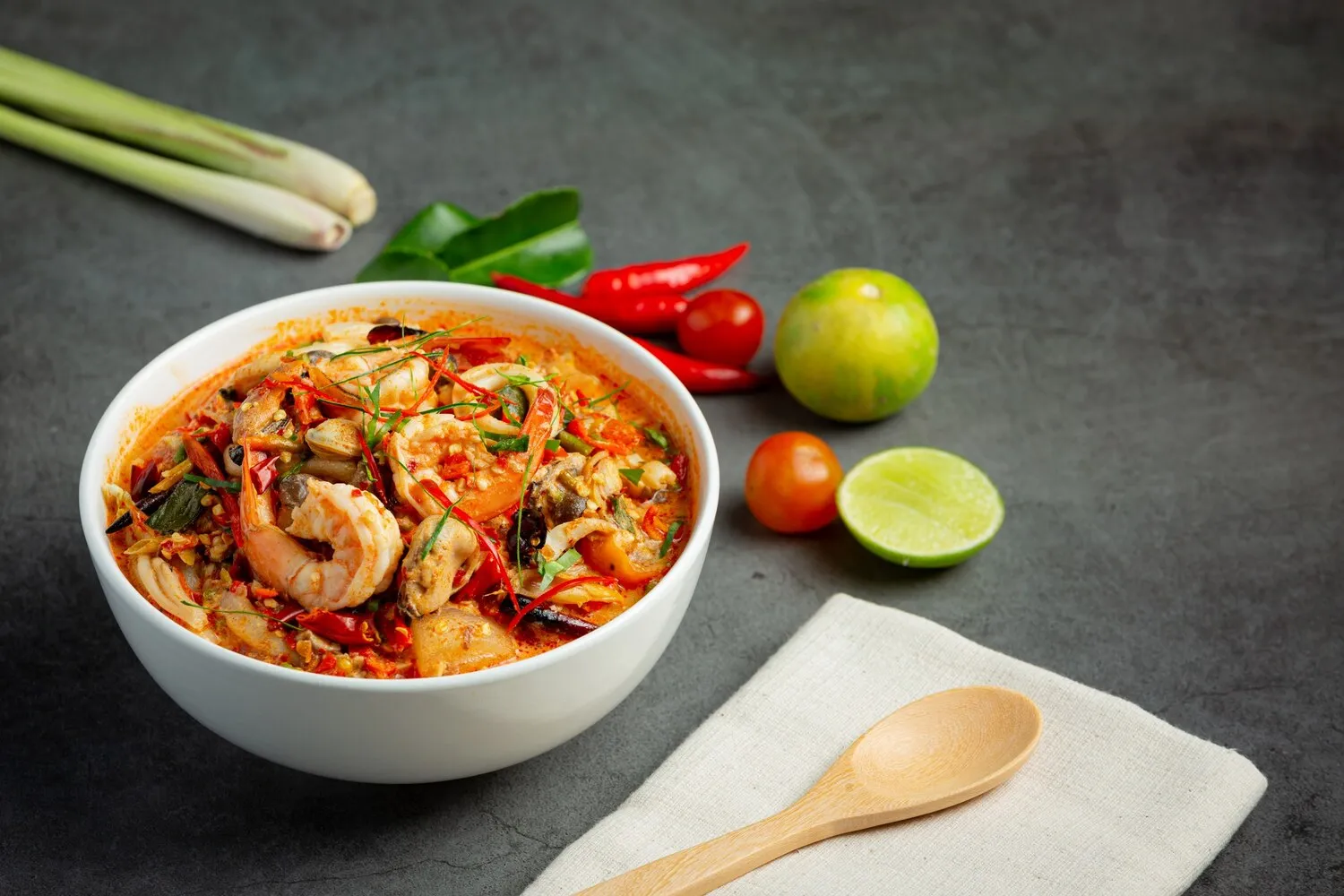
Vegetarian Chili
A hearty and flavorful vegetarian chili.
Nutrition Facts
* The % Daily Value (DV) tells you how much a nutrient in a serving of food contributes to a daily diet. 2,000 calories a day is used for general nutrition advice.
Chili, in general, evolved from the indigenous cuisines of the Americas, incorporating chili peppers, beans, and other locally available ingredients. Vegetarian versions are a more recent adaptation, reflecting a growing interest in plant-based diets and culinary innovation while maintaining the core flavors of traditional chili.
Vegetarian chili, like its meat-based counterpart, is a popular comfort food, often associated with gatherings, casual meals, and fall/winter seasons in the United States. It symbolizes warmth, sharing, and community.
Tailgating & Game Days
Chili, including vegetarian chili, is a staple at tailgates and game day gatherings. It's easy to prepare in large batches and keeps warm for extended periods, making it ideal for feeding crowds.
Chili Cook-offs
Chili cook-offs are popular events across the United States, providing a platform for amateur and professional cooks to showcase their unique chili recipes. Vegetarian chili categories are becoming increasingly common.
Adaptability & Personalization
Chili is highly adaptable, allowing for a wide range of variations based on regional preferences and dietary needs. Vegetarian chili, in particular, can be easily customized with different beans, vegetables, and spices.
Vegetarian chili is characterized by a robust and savory flavor profile, balancing earthy beans, spicy chili peppers, sweet vegetables, and smoky seasonings.
The primary flavors stem from the combination of chili powder (a blend of dried chili peppers, cumin, oregano, and other spices), diced tomatoes, beans (kidney, black, pinto, or a mix), and vegetables such as onions, bell peppers, and corn. Garlic and vegetable broth add depth, while smoked paprika or chipotle peppers contribute a smoky element. Some recipes may include sweetness from maple syrup or brown sugar, balanced by the acidity of lime juice or vinegar. The overall flavor is hearty, warming, and complex, with a pleasant level of spice.
Bloom Your Spices
Sautéing the chili powder and other spices in oil before adding the vegetables helps to 'bloom' the spices, releasing their full flavor and aroma.
Add a Touch of Acidity
A squeeze of lime juice, a splash of apple cider vinegar, or a dash of hot sauce at the end brightens the flavors and balances the richness of the chili.
Simmer Low and Slow
Allowing the chili to simmer for at least an hour (or longer) allows the flavors to meld together and deepen. A slow cooker is ideal for this purpose.
Consider Smoky Elements
Add depth by incorporating ingredients like smoked paprika, chipotle peppers in adobo sauce (finely chopped), or a few drops of liquid smoke.
Build Layers of Flavor
Rather than adding all the ingredients at once, stagger their addition. Sauté the aromatics first, then the spices, then the vegetables, and finally the beans and liquids. This helps to build layers of flavor.
Explore additional Soup dishes and restaurants
Explore SoupDiscover top dining spots and culinary experiences in Tustin.
Explore TustinLearn more about the food culture, restaurant scene, and culinary heritage of United States.
Explore United States